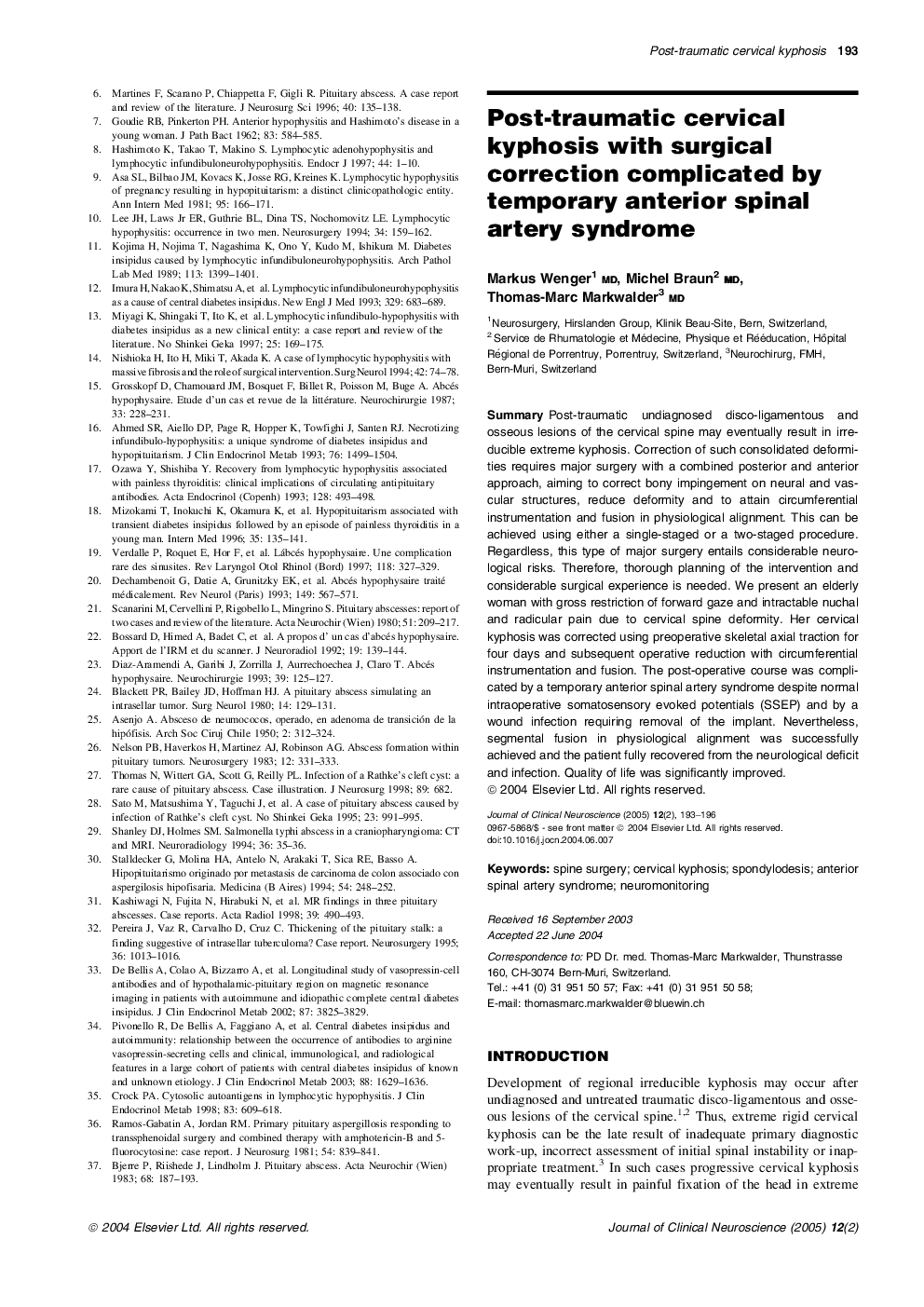| Article ID | Journal | Published Year | Pages | File Type |
|---|---|---|---|---|
| 9193584 | Journal of Clinical Neuroscience | 2005 | 4 Pages |
Abstract
Post-traumatic undiagnosed disco-ligamentous and osseous lesions of the cervical spine may eventually result in irreducible extreme kyphosis. Correction of such consolidated deformities requires major surgery with a combined posterior and anterior approach, aiming to correct bony impingement on neural and vascular structures, reduce deformity and to attain circumferential instrumentation and fusion in physiological alignment. This can be achieved using either a single-staged or a two-staged procedure. Regardless, this type of major surgery entails considerable neurological risks. Therefore, thorough planning of the intervention and considerable surgical experience is needed. We present an elderly woman with gross restriction of forward gaze and intractable nuchal and radicular pain due to cervical spine deformity. Her cervical kyphosis was corrected using preoperative skeletal axial traction for four days and subsequent operative reduction with circumferential instrumentation and fusion. The post-operative course was complicated by a temporary anterior spinal artery syndrome despite normal intraoperative somatosensory evoked potentials (SSEP) and by a wound infection requiring removal of the implant. Nevertheless, segmental fusion in physiological alignment was successfully achieved and the patient fully recovered from the neurological deficit and infection. Quality of life was significantly improved.
Related Topics
Life Sciences
Neuroscience
Neurology
Authors
Markus MD, Michel MD, Thomas-Marc MD,
